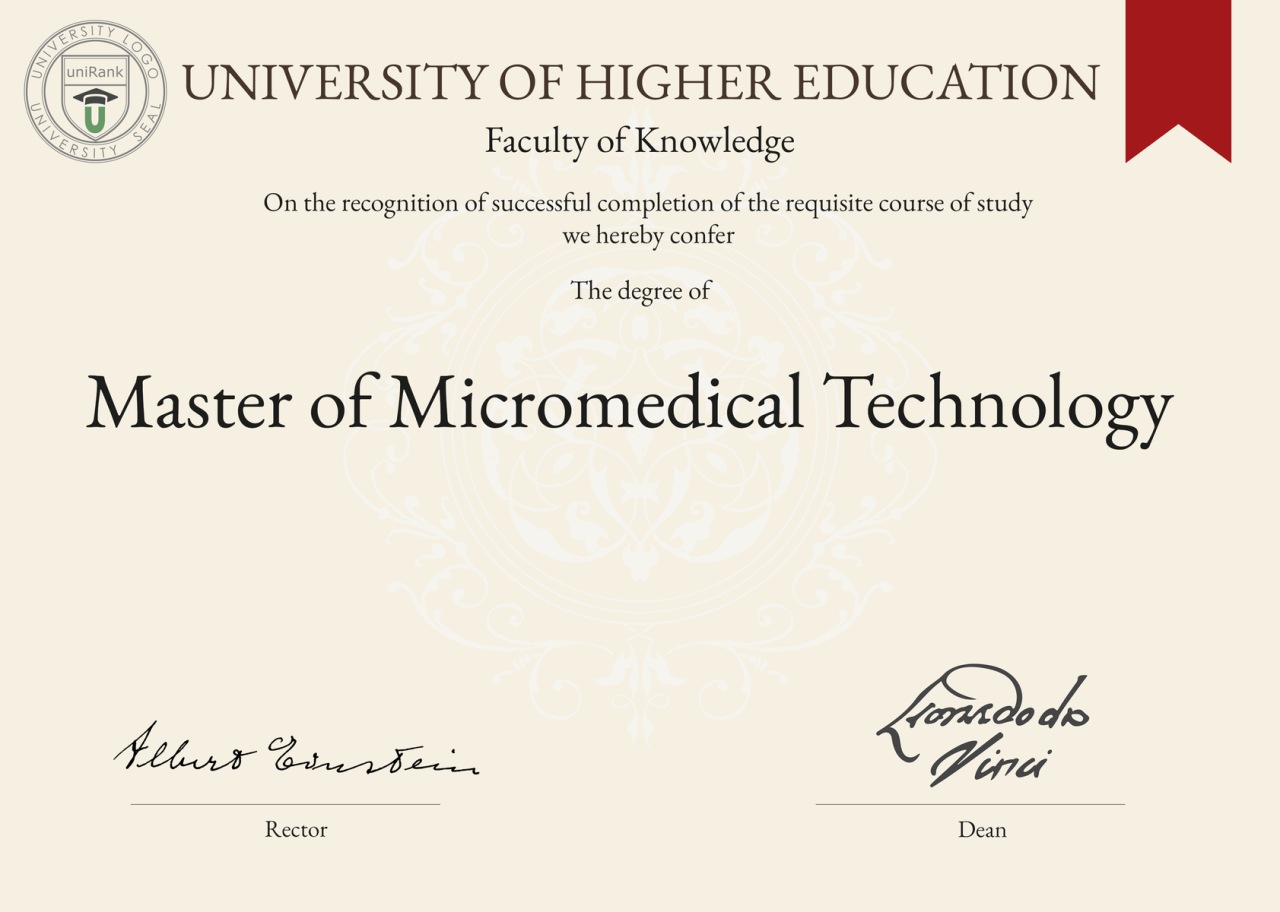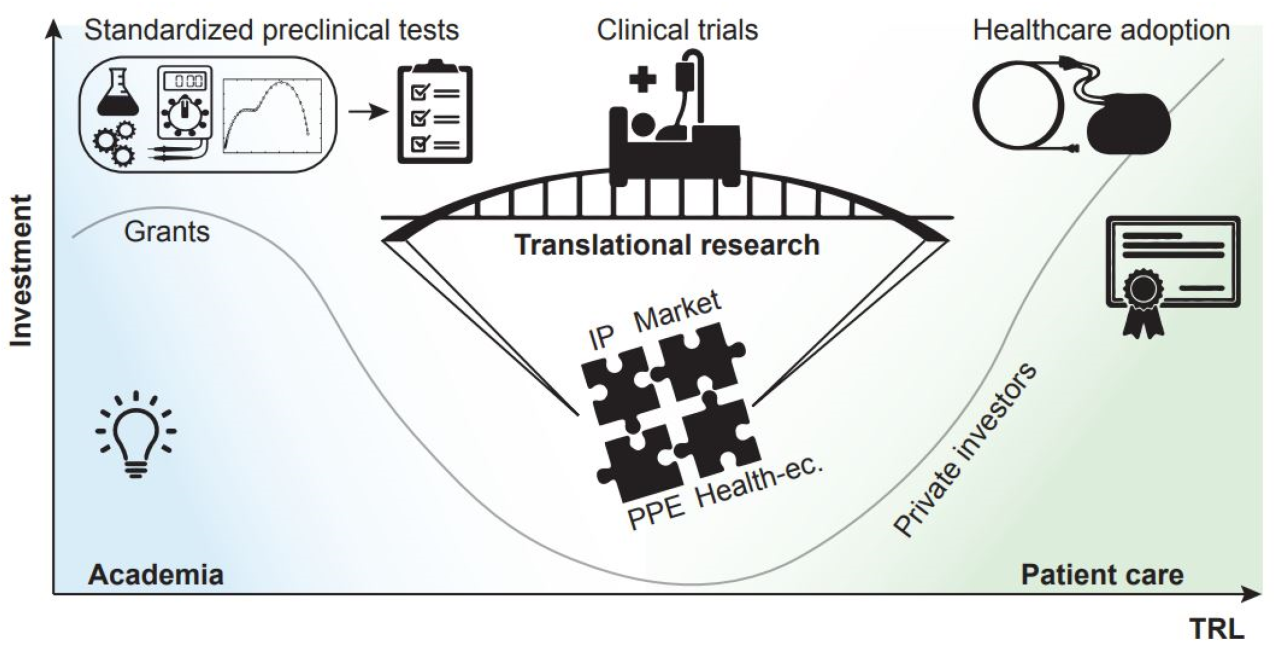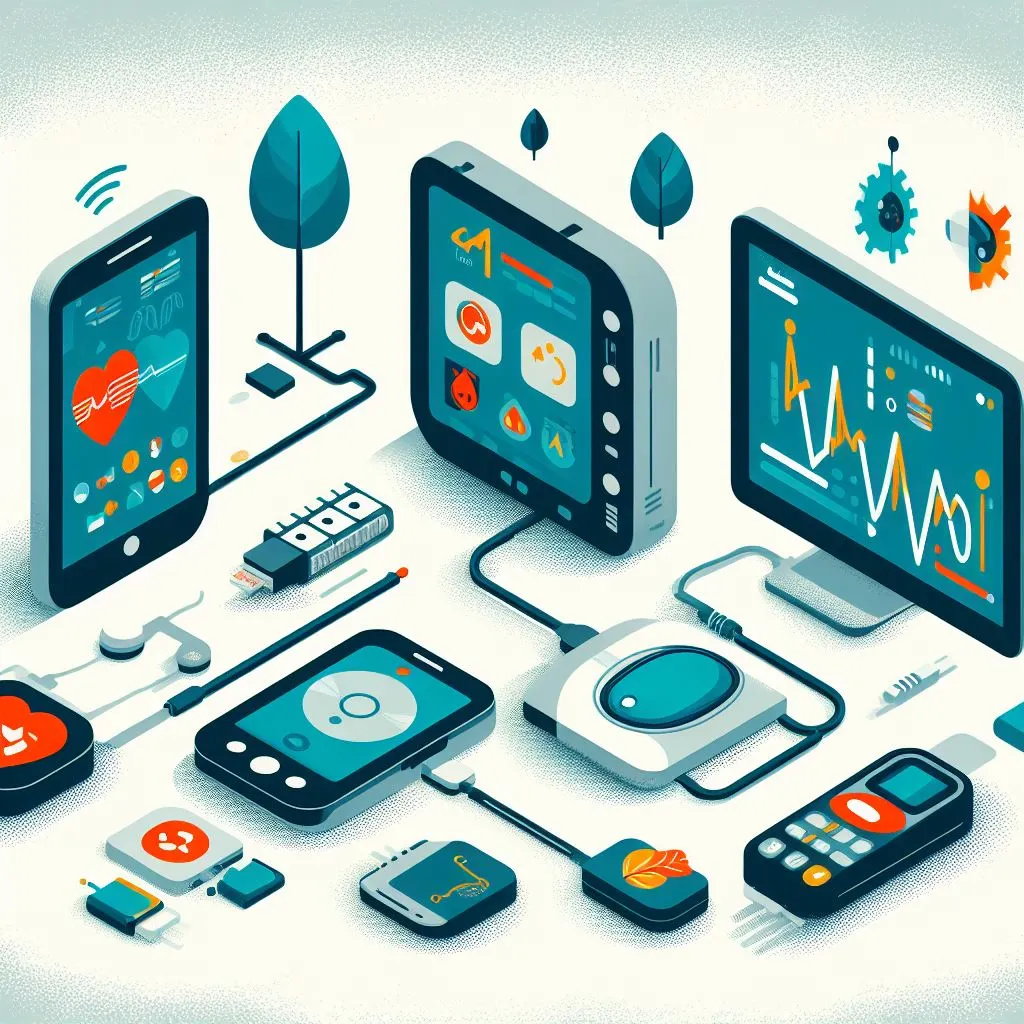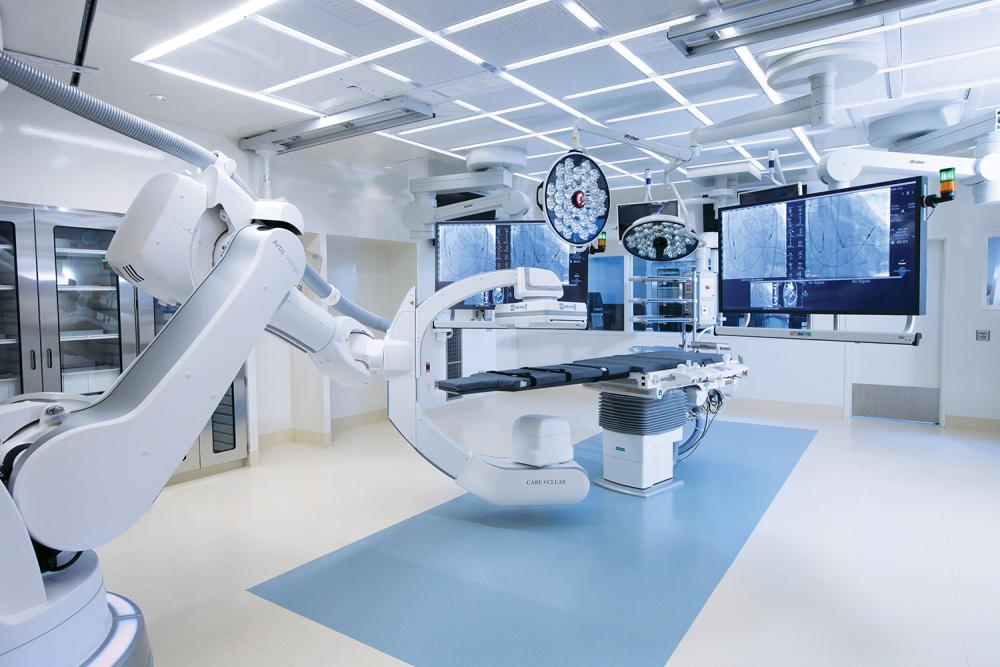Micromedical Technologies: Revolutionizing Healthcare
Micromedical technologies are ushering in a new era of healthcare, where treatments are becoming increasingly precise, personalized, and minimally invasive. This field encompasses a diverse range of tools and techniques […]

Micromedical technologies are ushering in a new era of healthcare, where treatments are becoming increasingly precise, personalized, and minimally invasive. This field encompasses a diverse range of tools and techniques that leverage the power of miniaturization, nanotechnology, and advanced materials to address medical challenges in innovative ways.
From microscopic sensors that monitor vital signs in real-time to targeted drug delivery systems that precisely target diseased cells, micromedical technologies are revolutionizing diagnostics, treatment, and disease prevention. Their ability to interact with the human body at a cellular level opens up unprecedented opportunities for improving patient outcomes and enhancing overall well-being.
Definition and Scope of Micromedical Technologies

Micromedical technologies, also known as micromedicine, encompass a wide range of innovative medical devices and techniques that leverage the power of miniaturization. These technologies operate at the microscopic scale, enabling unprecedented precision and capabilities in diagnosing, treating, and preventing diseases.
Micromedical technologies are characterized by their small size, high sensitivity, and ability to interact with biological systems at the cellular and molecular level. They offer a distinct advantage over traditional medical practices by providing minimally invasive procedures, personalized treatments, and real-time monitoring of physiological processes.
Types of Micromedical Technologies
Micromedical technologies encompass a diverse range of applications, categorized based on their functionalities and target applications.
- Micro-sensors and Biosensors: These tiny devices are designed to detect and measure specific biological markers, such as glucose levels, blood pressure, or biomarkers associated with diseases. Micro-sensors can be implanted within the body or worn externally to provide continuous monitoring and early disease detection.
- Microfluidic Devices: Microfluidic devices manipulate and control the flow of fluids at the microscale. They are used in a variety of applications, including drug delivery, diagnostics, and cell culture.
- Micro-robots and Nanorobots: Micro-robots and nanorobots are microscopic machines capable of performing targeted tasks within the body. They can be used for drug delivery, surgery, and targeted therapy.
- Micro-implants: Micro-implants are tiny devices that are implanted within the body to provide a variety of functions, including drug delivery, tissue regeneration, and electrical stimulation.
- Lab-on-a-Chip Devices: These devices integrate multiple laboratory functions onto a single chip, enabling rapid and accurate diagnosis and analysis.
Examples of Micromedical Technologies
The field of micromedical technologies is rapidly evolving, with numerous examples of existing and emerging applications.
- Glucose Monitors: Micro-sensors embedded in continuous glucose monitors (CGMs) are widely used by individuals with diabetes to monitor their blood sugar levels in real-time.
- Stents: Micro-implants, such as drug-eluting stents, are used to open blocked arteries and prevent re-blockage.
- Cochlear Implants: These devices, which consist of micro-sensors and micro-processors, restore hearing in individuals with profound hearing loss.
- Microfluidic Devices for Cancer Diagnostics: Microfluidic devices are being developed for rapid and sensitive detection of cancer cells in blood or tissue samples.
- Nanorobots for Targeted Drug Delivery: Researchers are developing nanorobots that can deliver drugs directly to tumor cells, reducing side effects and improving treatment efficacy.
Applications of Micromedical Technologies

Micromedical technologies have revolutionized healthcare, offering innovative solutions for diagnosis, treatment, and disease prevention. These miniature devices and systems are designed to interact with the human body at the cellular and molecular levels, enabling unprecedented precision and effectiveness in medical interventions.
Applications in Diagnostics
Micromedical technologies play a crucial role in early disease detection and accurate diagnosis. These technologies enable the rapid and sensitive detection of biomarkers, pathogens, and other indicators of disease.
- Lab-on-a-Chip Devices: These miniaturized platforms integrate multiple diagnostic functions on a single chip, allowing for rapid and simultaneous analysis of multiple biomarkers. They are particularly useful in point-of-care diagnostics, where immediate results are crucial for patient management.
- Microfluidic Biosensors: These sensors utilize microfluidic channels to manipulate and detect biological molecules, such as proteins and DNA. They offer high sensitivity and specificity for disease diagnosis, particularly in early stages.
- Nanoparticle-Based Diagnostics: Nanoparticles can be engineered to target specific cells or tissues, enabling the detection of disease-related molecules or cells with high accuracy. They are particularly promising for cancer diagnostics, where early detection is crucial for successful treatment.
Applications in Treatment
Micromedical technologies are transforming the way diseases are treated, offering targeted therapies and minimally invasive procedures. These technologies enable the delivery of drugs and therapies directly to the site of disease, minimizing side effects and improving treatment outcomes.
- Drug Delivery Systems: Micromedical devices, such as micro-needles and nanoparticles, can be used to deliver drugs directly to target tissues or cells, enhancing drug efficacy and reducing systemic side effects. They are particularly useful in delivering chemotherapy drugs, insulin, and vaccines.
- Tissue Engineering and Regeneration: Micromedical technologies are enabling the development of biocompatible materials and scaffolds for tissue regeneration. These technologies are being used to develop artificial organs and tissues, providing potential solutions for organ transplantation and tissue repair.
- Targeted Therapy: Micromedical technologies allow for the development of therapies that target specific disease pathways, minimizing side effects and improving treatment efficacy. For example, micro-robots can be used to deliver chemotherapy drugs directly to tumor cells, minimizing damage to healthy tissues.
Applications in Disease Prevention
Micromedical technologies are also playing a significant role in disease prevention. These technologies enable the early detection of risk factors and the development of personalized preventive measures.
- Personalized Medicine: Micromedical technologies allow for the analysis of individual genetic and molecular profiles, enabling the development of personalized preventive strategies. This approach allows for tailored interventions based on individual risk factors and genetic predispositions.
- Early Detection of Risk Factors: Micromedical devices can be used to monitor key health indicators, such as blood glucose levels, blood pressure, and cholesterol levels, enabling the early detection of risk factors for chronic diseases. This allows for timely interventions and lifestyle modifications to prevent disease progression.
- Biocompatible Materials: Micromedical technologies are enabling the development of biocompatible materials for implantable devices, such as pacemakers and drug delivery systems. These materials minimize the risk of rejection and infection, improving the long-term safety and efficacy of these devices.
Applications in Specific Medical Fields
Micromedical technologies are finding applications in various medical specialties, offering novel solutions for diagnosis, treatment, and disease prevention.
| Medical Specialty | Micromedical Technology Applications |
|---|---|
| Oncology | Nanoparticle-based drug delivery, micro-robots for targeted therapy, lab-on-a-chip devices for cancer diagnostics. |
| Cardiology | Implantable micro-devices for heart monitoring and pacing, microfluidic sensors for detecting cardiac biomarkers, biocompatible materials for heart valve replacements. |
| Neurology | Micro-electrodes for brain-computer interfaces, microfluidic devices for drug delivery to the brain, nanoparticle-based imaging agents for brain imaging. |
Advantages and Challenges of Micromedical Technologies

Micromedical technologies hold immense promise for revolutionizing healthcare by offering novel approaches to diagnosis, treatment, and monitoring of diseases. Compared to traditional methods, these technologies provide several advantages, leading to enhanced accuracy, efficiency, and improved patient outcomes. However, their development and implementation also present unique challenges that require careful consideration and addressal.
Advantages of Micromedical Technologies
Micromedical technologies offer a multitude of advantages over conventional medical practices, leading to significant improvements in healthcare delivery.
- Enhanced Accuracy and Precision: Micromedical devices, due to their miniature size and advanced sensors, can provide highly accurate and precise measurements of physiological parameters, enabling more targeted and personalized treatments. For example, microfluidic chips can analyze minute samples of blood or tissue, providing detailed information about a patient’s health status, which is crucial for early disease detection and personalized treatment plans.
- Minimally Invasive Procedures: Micromedical technologies enable minimally invasive procedures, reducing the risk of complications, pain, and recovery time for patients. For instance, micro-robots can be used for targeted drug delivery, surgical interventions, and tissue repair, minimizing the need for large incisions and reducing trauma to the body.
- Improved Efficiency and Speed: Micromedical devices can perform complex tasks rapidly and efficiently, streamlining diagnostic and therapeutic processes. For example, microfluidic platforms can automate laboratory procedures, reducing turnaround time for diagnostic results and enabling faster treatment initiation.
- Real-Time Monitoring and Feedback: Micromedical devices, such as implantable sensors and wearable devices, can continuously monitor vital signs and physiological parameters, providing real-time data for personalized treatment adjustments and early intervention. This continuous monitoring can help prevent complications and improve patient outcomes.
- Reduced Costs: Micromedical technologies can potentially reduce healthcare costs by minimizing the need for expensive and time-consuming procedures. For example, microfluidic devices can enable point-of-care diagnostics, eliminating the need for laboratory testing and reducing overall healthcare expenses.
Challenges of Micromedical Technologies
While micromedical technologies offer significant advantages, their development and implementation also present challenges that need to be addressed to ensure their safe and effective use.
- Technical Complexity and Manufacturing: Micromedical devices are often complex and require sophisticated manufacturing processes, posing challenges in terms of design, fabrication, and quality control. The miniaturization of components and the integration of multiple functionalities within a small device necessitate advanced engineering and manufacturing capabilities.
- Biocompatibility and Safety: Ensuring the biocompatibility and safety of micromedical devices is crucial, as they interact directly with biological tissues and fluids. The materials used in these devices should be non-toxic, non-immunogenic, and resistant to degradation in the body. Rigorous testing and clinical trials are essential to assess the safety and long-term effects of these technologies.
- Power Supply and Communication: Micromedical devices require reliable power sources and communication systems for operation and data transmission. Miniaturizing batteries and developing efficient wireless communication protocols for transmitting data from implanted devices are ongoing challenges.
- Ethical Considerations: The use of micromedical technologies raises ethical concerns related to patient privacy, data security, and potential misuse. For example, the use of implantable devices for continuous monitoring could raise concerns about data privacy and the potential for unauthorized access to personal health information.
- Regulatory Approval and Public Acceptance: Obtaining regulatory approval for new micromedical technologies can be a lengthy and complex process, requiring extensive testing and clinical trials to demonstrate safety and efficacy. Public acceptance of these technologies is also crucial for their successful implementation, and addressing concerns about safety, privacy, and potential risks is essential.
Ethical Considerations, Micromedical technologies
The ethical considerations surrounding the use of micromedical technologies are complex and multifaceted, requiring careful deliberation and ongoing discussion.
- Privacy and Data Security: Micromedical devices often collect sensitive personal health data, raising concerns about privacy and data security. It is crucial to establish robust measures to protect patient data from unauthorized access and misuse.
- Informed Consent: Patients should be fully informed about the risks, benefits, and limitations of micromedical technologies before making decisions about their use. Informed consent processes should be clear, comprehensive, and easily understandable to ensure patients can make informed choices about their healthcare.
- Equity and Access: Micromedical technologies have the potential to improve healthcare outcomes, but it is crucial to ensure equitable access to these technologies for all individuals, regardless of their socioeconomic status or geographic location. Addressing disparities in access to healthcare is essential to maximize the benefits of micromedical technologies.
- Potential for Misuse: As with any advanced technology, micromedical technologies could be misused or exploited. It is important to establish ethical guidelines and regulatory frameworks to prevent the misuse of these technologies and ensure their responsible use.
Future Trends and Innovations in Micromedical Technologies
Micromedical technologies are rapidly evolving, driven by advancements in nanotechnology, biomaterials, and artificial intelligence. These innovations are paving the way for more precise, personalized, and minimally invasive medical treatments.
Nanotechnology in Micromedical Technologies
Nanotechnology plays a crucial role in micromedical technologies, enabling the development of devices and materials at the nanoscale.
- Nanoparticles for drug delivery: Nanoparticles can be engineered to deliver drugs directly to target cells, minimizing side effects and enhancing therapeutic efficacy. For example, liposomes, nano-sized vesicles, are used to encapsulate drugs and deliver them to specific cells or tissues.
- Nanomaterials for biosensing: Nanomaterials, such as quantum dots and graphene, exhibit unique optical and electrical properties that can be harnessed for highly sensitive biosensing applications. These materials can detect biomarkers in biological samples with high accuracy, enabling early disease diagnosis.
- Nanorobotics for targeted therapy: Nanorobots, microscopic robots, have the potential to perform complex tasks within the human body, such as delivering drugs, removing pathogens, and repairing damaged tissues. While still in the early stages of development, nanorobotics holds immense promise for revolutionizing medicine.
Biomaterials in Micromedical Technologies
Biomaterials are essential for the development of micromedical devices and implants.
- Biocompatible materials: Biocompatible materials are designed to minimize immune responses and promote tissue integration. These materials are used in implants, such as artificial joints and stents, to ensure long-term functionality and safety.
- Biodegradable materials: Biodegradable materials break down naturally within the body over time, reducing the need for invasive removal procedures. This is particularly advantageous for drug delivery systems and temporary implants.
- Smart biomaterials: Smart biomaterials can respond to changes in the environment, such as temperature or pH, allowing for controlled drug release or tissue regeneration. These materials are being explored for applications in wound healing, drug delivery, and tissue engineering.
Artificial Intelligence in Micromedical Technologies
Artificial intelligence (AI) is transforming micromedical technologies by enabling faster and more accurate diagnosis, treatment planning, and patient monitoring.
- AI-powered diagnosis: AI algorithms can analyze medical images, such as X-rays and CT scans, to detect abnormalities and assist in early diagnosis. For example, AI-based systems are being used to detect breast cancer, lung cancer, and other diseases.
- Personalized medicine: AI can analyze patient data, such as genetic information and medical history, to tailor treatment plans to individual needs. This personalized approach can improve treatment outcomes and reduce side effects.
- Robotic surgery: AI-powered robotic systems can assist surgeons in performing minimally invasive surgeries with greater precision and control. These systems can also provide real-time feedback and guidance during surgery.
Impact of Micromedical Technologies on Healthcare Systems
Micromedical technologies have the potential to revolutionize healthcare systems and delivery models, transforming how we diagnose, treat, and manage diseases. These technologies offer a unique blend of miniaturization, advanced sensors, and sophisticated data analysis capabilities, enabling more personalized, efficient, and accessible healthcare solutions.
Impact on Healthcare Costs
The widespread adoption of micromedical technologies could significantly impact healthcare costs, leading to both reductions and potential increases.
- Reduced Costs: Micromedical technologies can potentially reduce healthcare costs by enabling earlier diagnosis and intervention, minimizing the need for expensive hospitalizations and invasive procedures. For example, wearable health monitors can detect early signs of cardiovascular disease, allowing for timely interventions and preventing costly complications.
- Increased Costs: While some micromedical technologies can reduce costs, others may initially lead to increased expenses due to the cost of developing, manufacturing, and deploying these technologies. However, the long-term benefits of improved health outcomes and reduced hospitalizations could outweigh these initial investments.
Impact on Healthcare Accessibility
Micromedical technologies can enhance healthcare accessibility, particularly in underserved areas and for individuals with limited access to traditional healthcare facilities.
- Remote Monitoring and Diagnosis: Micromedical technologies, such as telemedicine platforms and wearable health sensors, allow healthcare providers to remotely monitor patients, diagnose conditions, and provide personalized treatment plans. This accessibility can be particularly beneficial in rural areas with limited healthcare infrastructure.
- Point-of-Care Diagnostics: Microfluidic devices and lab-on-a-chip technologies enable rapid and accurate diagnostics at the point of care, eliminating the need for centralized laboratories and reducing diagnostic delays. This accessibility can be crucial in resource-limited settings and for individuals with limited mobility.
Impact on Patient Engagement
Micromedical technologies empower patients to actively participate in their health management, promoting self-monitoring, adherence to treatment plans, and improved health outcomes.
- Personalized Health Data: Micromedical technologies provide patients with access to their own health data, enabling them to track their progress, identify potential health risks, and make informed decisions about their healthcare. This personalized data can also be shared with healthcare providers for more informed decision-making.
- Interactive Health Applications: Micromedical technologies are integrated with mobile applications and other digital platforms, offering patients access to health information, educational resources, and tools for managing their health conditions. These interactive applications can improve patient engagement and adherence to treatment plans.
Role in Addressing Global Health Challenges
Micromedical technologies hold immense potential in addressing global health challenges, particularly in areas with limited access to healthcare infrastructure and resources.
- Disease Surveillance and Outbreak Response: Micromedical technologies can be used for rapid disease surveillance and outbreak response, enabling early detection and containment of infectious diseases. For example, microfluidic devices can be deployed in remote areas for rapid diagnosis of infectious diseases like malaria and tuberculosis.
- Developing World Healthcare: Micromedical technologies offer a cost-effective and efficient solution for delivering healthcare in developing countries. These technologies can provide access to essential diagnostic tools, personalized treatment plans, and remote monitoring capabilities, improving healthcare outcomes in underserved populations.
Social and Economic Implications
The widespread adoption of micromedical technologies will have significant social and economic implications, impacting employment, healthcare policy, and the overall societal landscape.
- Job Creation and Transformation: The development and deployment of micromedical technologies will create new job opportunities in fields like biotechnology, engineering, and data analysis. However, it may also lead to job displacement in traditional healthcare sectors as tasks become automated.
- Ethical Considerations: The use of micromedical technologies raises ethical considerations regarding data privacy, security, and equitable access. It is essential to establish clear guidelines and regulations to ensure responsible and ethical implementation of these technologies.
Closing Summary
The development of micromedical technologies is poised to continue its rapid advancement, driven by ongoing research and development in fields such as nanotechnology, biomaterials, and artificial intelligence. As these technologies become more sophisticated and accessible, they are poised to transform the landscape of healthcare, offering hope for better disease management, improved diagnostics, and personalized treatment plans.
Micromedical technologies are revolutionizing healthcare by enabling smaller, more precise interventions. These advancements often require rigorous testing and assessment to ensure safety and efficacy. For this purpose, tools like assessment technology galileo can play a crucial role, providing valuable insights into the performance and potential of these groundbreaking micromedical devices.










